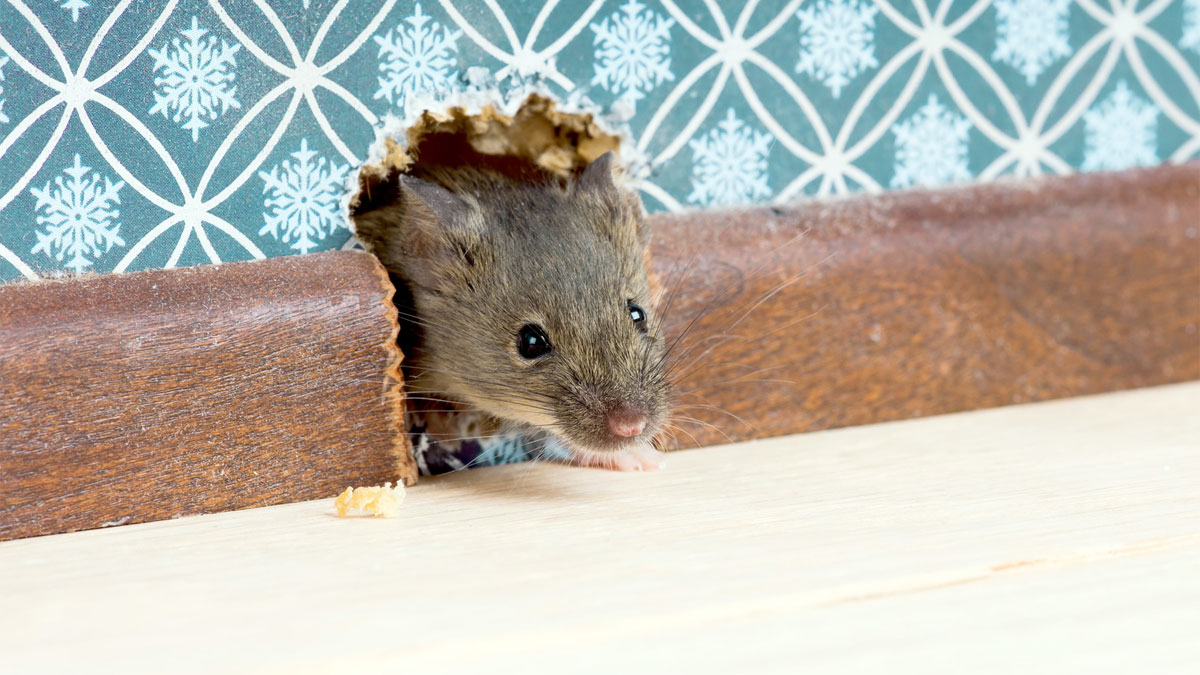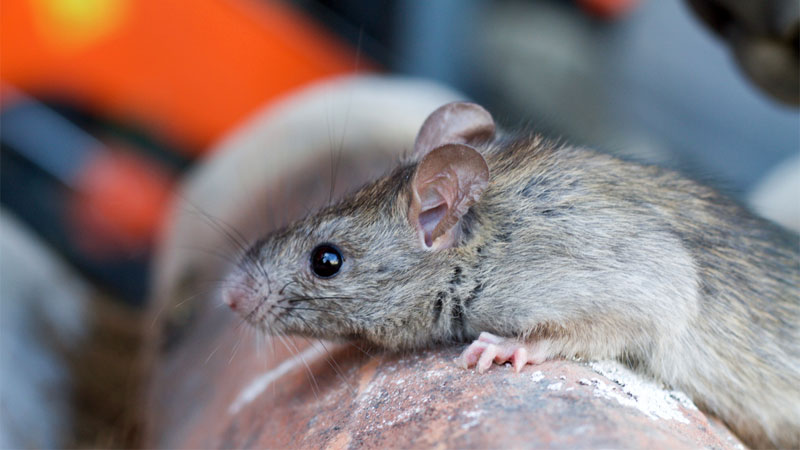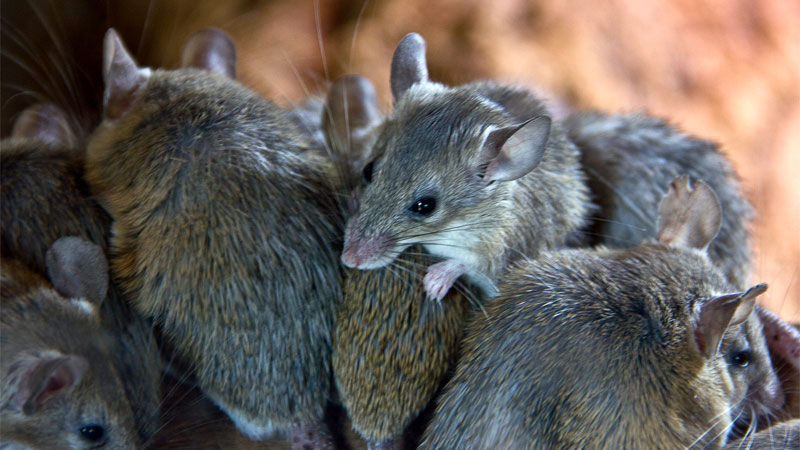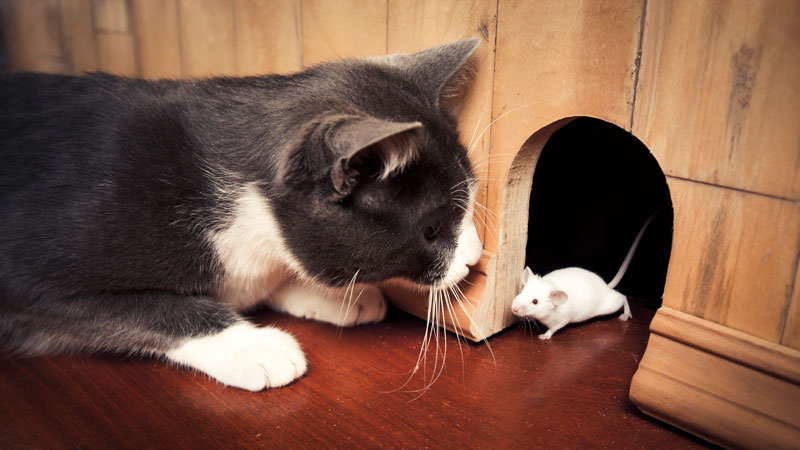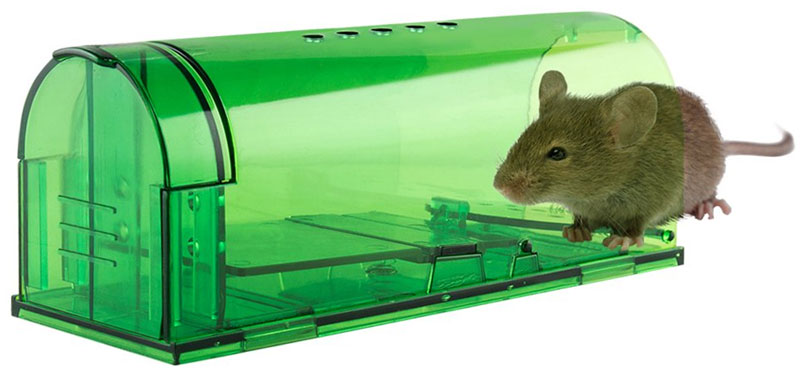Let’s be honest, there are some critters we love more than others, even when they’re closely related. For example, we love bunnies, but tend to hate mice.
While the most commonly voiced argument between these two is that bunnies are fluffy and cute while mice are small and have long, naked tails that make them much less attractive. Another argument is that mice carry a type of flea known to spread the Bubonic Plague.
But perhaps the real reason is that many types of mice will readily invade your home while rabbits and hares prefer the great outdoors. Even if you don’t suffer from musophobia, it’s never fun to see one scurrying across a kitchen counter.
But it’s worth asking: if you see one mouse, then how many do you really have?
Is it really just one? Or is there a small army setting up camp inside your home?
We’re not going to lie, there’s no one correct answer here, but instead a number of variables and signs you can use to figure out the size of the mouse infestation.
Related: How to Get Mice Out of Your Home
How Many Are There?
Thinking Outside the Box (or Inside the Walls)
There’s a common issue when it comes to doing math, which is our habit of only thinking in two dimensions.
Take, for example, this little brainteaser, which perfectly illustrates the problem:
You are having a party and have baked a cake. There are eight guests coming.
What is the minimum number of cuts you need to make to give everyone an equal-sized slice?
Did you figure out the answer without cheating? If so, you’ve already got an advantage in figuring out the mouse problem. This is because you have to consider some variables most people never think of.
For example, mice can hide in walls, floors, ceilings, dressers and other furniture,.. And they’re not limited to a specific room, either.
As a result, much like the cake question, we need to treat the house and infestation much like cutting the cake. It needs to be examined from angles you might not have considered, and then we need to use the signs of an infestation to figure out where to make our cuts.
Seasons Change, Mouse Populations Change
Perhaps the single biggest question is one of sex and the seasons. It’s pretty tough to miss when a male mouse is in the house because they don’t exactly wear pants. But spotting a female mouse is another story.
It’s not uncommon for a single mouse to wander in during the later autumn months or winter looking for food and shelter. However, if it’s a female mouse, there’s a good chance you already have more than one.
While there are some slight variations in how a house mouse, deer mouse, or field mouse (to name few) behave, you are more likely to have multiple house mice than other types.
Calculating the Potential Infestation
Just to give a worst-case scenario, let’s say one pregnant female mouse found her way inside. You didn’t notice the mouse droppings right away, and she gave birth inside of your walls.
If no adult males are present, but at least one of the pups is a male, she will be able to mate with him in as little as five weeks after he’s born.
Considering a female mouse can give birth between five and ten times per year, gestation of the litter (usually six to eight pups but can be as many as 14 or as few as three) takes 19 to 21 days, and the mother can get pregnant again immediately after giving birth… Well, you can see how bad things can get.
But the good news is we have various signs to give us an idea of how severe an infestation is and whether you’ve gotten rid of all the mice.
And the Sign Says…?
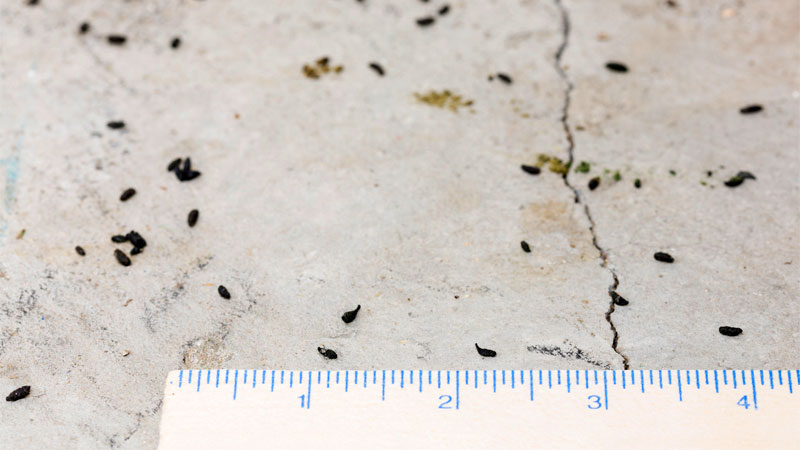
There are many signs that you have mice in your home, and these signs can be used to help judge the severity of the infestation, although they won’t give you exact numbers. Let’s break these down into single and multiple mouse signs to make it easy.
Signs You May Have One Mouse
There’s no 100 percent guarantee you’ve only got one mouse, but there are several signs to support it. For example:
- The only mouse droppings are found near a water or food source and they’re extremely scarce
- Being nocturnal creatures, you will only spot a solitary mouse at night
- The mouse you spot is a male
Signs You Have Multiple Mice
On the flip side of the coin, you don’t need a pest control company to tell you there’s a larger infestation in the home. Some signs include:
- Mouse droppings appearing in rooms throughout the entire house, not just where there are obvious sources of food – as well as musky odors from all the mouse urine
- Scratching as the mice build nests or climb inside your walls or ceiling
- Larger populations mean food scarcity, which leads to smaller, weaker mice that will come out even during the day looking for food
- You spot a female mouse
- There are gnaw marks on various surfaces such as kitchen cabinets or baseboards
- Your cats keep bringing you dead mice
- Damage to electrical wires in your walls or on kitchen appliances
- Multiple holes appear in food packaging that weren’t there yesterday
Bonus: Some Easy Ways to Catch Mice While Counting
Identifying the size of mice infestations isn’t easy, but there’s one way you can have the proverbial cake and dispose of it too – and that is to count and catch at the same time.
Here are a couple capture methods that work really well as well as how to evaluate whether you’ve caught them all.
Cat-Astrophic Stealth Fails
This one might seem cruel, but it’s actually a very natural approach. If you have an active feline family member, they will be on the lookout for mice and other home invaders. In fact, seeing your cat constantly examining a portion of wall is often a dead giveaway that something is alive in there.
But mice need to eat, and so they will bravely attempt to sneak around in search of food. Unfortunately, one mistake and the cat will get them. You’ll know if your feline friend has caught a mouse because they will often bring it to you as a food offering and to show they’re also providing for the family.
My two formerly feral cats, however, capture at least one mouse every winter when they sneak in from the nearby woods for shelter. Note that I said capture, because the cats will usually play with the mouse, keeping it alive and terrified until I can remove it from the house.
In our case, the mice become too scared to ever return (if they survive the encounter), but you should ALWAYS release a mouse or rat at least five miles away or they’ll often find their way back.
And if your cat kills or corners a mouse, be sure to give them a treat. This will ensure they continue to hunt any active mouse infestations.
Using Live Traps
Let’s be VERY clear here: snap traps are brutal and sometimes fail to kill the mouse right away. But they are a cheap, easy to use, tried and true method despite them not always working as planned.
Mouse poison bait stations have an even worse effect leaving you with a poisoned critter hiding in your home. This can lead to all sorts of risks for your family – especially if the wounded mouse later dies in one of your crawl spaces or walls.
Thus, using live traps (like this one) is often the best course of action. Put a little peanut butter in the trap and check it every morning. If you find a mouse, be sure to release it at least five miles from your home so it won’t come back.
Keeping an Eye on Activity Levels
It’s tough to tell if you’ve gotten rid of all the mice, and there’s a risk that mouse pups are trapped in the nest and will die. But there are a few things to get a rough idea:
- The number of mouse droppings drop off
- Your cereal boxes are no longer getting gnawed on
- You stop seeing new tooth marks appear
- The traps remain empty
When in doubt, have a pest control professional evaluate your home. For less money than you think, they can ensure there are no mice left and help you prevent future infestations.
- How to Get Rid of Hawks - March 8, 2024
- How to Get Rid of Pill Bugs (Rolly Pollies) - March 1, 2024
- How to Get Rid of Groundhogs (Woodchucks) - February 5, 2024

